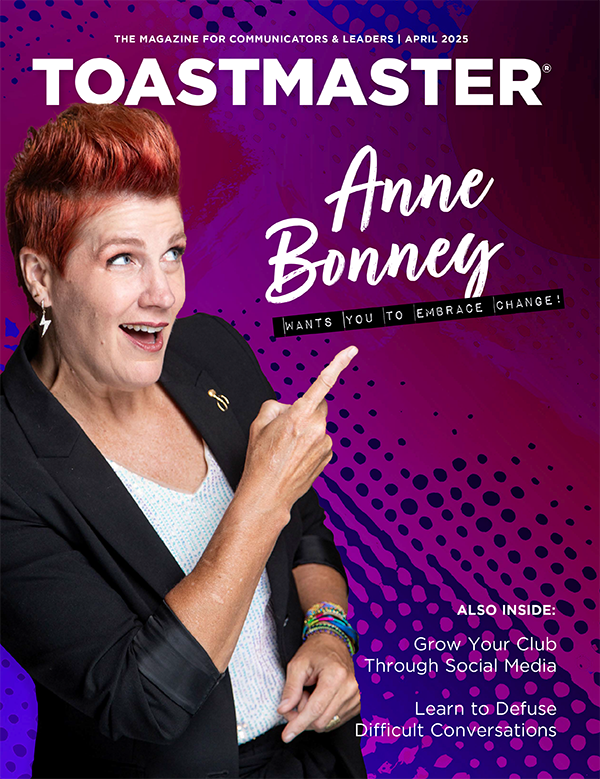
Sooner or later that day is going to arrive—the day when you’ll give your first speech evaluation. I suspect you’ll have a few concerns as that time approaches. You might ask, “What do I look for? How do I put my thoughts together? What if the speaker is much better than I am?” As you prepare for your first evaluation, try to learn ahead of time which manual the speaker is using. I recommend you read the whole project through, but if you don’t get the chance to do that before the meeting, at least look at the questions on the Evaluation Guide at the end of the project to familiarize yourself with the speech requirements.
As you read those questions, you may be thinking: This is a long list! On my first evaluations I found those lists overwhelming, so I picked three criteria from the Evaluation Guide to focus on. That gave me something more manageable, something that didn’t seem like such a daunting task.
I took a sheet of paper and divided it into quadrants. I did this by drawing a vertical line down the center of the page and a horizontal line halfway down. That gave me four boxes.
I gave the first three boxes a heading of one of the three criteria listed in the manual. In the fourth box, I wrote “Anything Else That I See.” As I listened to the speaker deliver his speech, I listed my observations in the appropriate box.
You might want to take the same approach. It will help you organize your thoughts and keep you focused. If you come up with an empty box, it means that you need to look closer at the criteria you had chosen.
Before you know it, the speech will be over. Now is the time to prepare your oral evaluation. Take a look at your observations and find three or four positive comments. Number them in the order that you will deliver them. Next, look for one or two areas for improvement. Number those, as well. Then come up with an encouraging comment as a conclusion. Congratulations, you are now ready to present your first speech evaluation!
Yes, I know. That one big question remains: “What can I tell the best speaker in the club if I don’t see any room for improvement?”
I will answer that question by telling a personal story. I have delivered a lot of speeches over the last 10-plus years, which means I have received a lot of evaluations. However, there is one I think about on a regular basis, and that one occurred about five years ago. It was from a relatively new Toastmaster. What did she say that was so memorable?
“Bill, you are a really good speaker. There isn’t anything that I can tell you—except that you keep playing with the flap on the pocket of your sports jacket.”
Great input! You see, I had a nervous habit—it was an obvious habit that was sure to drive my audience crazy. Why didn’t the more advanced Toastmasters ever mention it? It’s because they had been looking only at speech structure, body language and other traditional criteria. They didn’t see my habit because they had looked right past it.
You, as a new member, are in a unique position to help the advanced speakers in your club because you observe their speeches through fresh eyes. So if you are evaluating someone who is a much better speaker than you are, ask yourself, Are they doing anything that seems a little strange?
Evaluating a speech is relatively simple. It involves reporting on what you see and hear—in a friendly, helpful manner. As you learn more, your evaluations will become richer in content. Yes, eventually you will look at speech structure and body language. And for those of you who haven’t yet started in the Pathways learning experience—Toastmasters’ new education program—you’ll get lots of practice with speech evaluations when Pathways is introduced in your district. But for now, start where you are today, and recognize that you are in a unique position to help every member in your club.
Additional resources are available in the Toastmasters Online Store:
- The Art of Effective Evaluation PowerPoint presentation (Item # 251CD) and its coordinating workbook (Item # 251B).
- The Individual Speech Evaluation Form, set of 25 (Item # 165).
- Evaluate to Motivate, which is part of The Successful Club Series, is a 10-minute presentation that can be conducted by one member of your club for the benefit of all. (Item # 292).
Bill Brown, DTM is a speech delivery coach in Gillette, Wyoming. He is a member of Energy Capital Toastmasters in Gillette. Learn more at billbrownspeechcoach.com.




 Previous Article
Previous Article